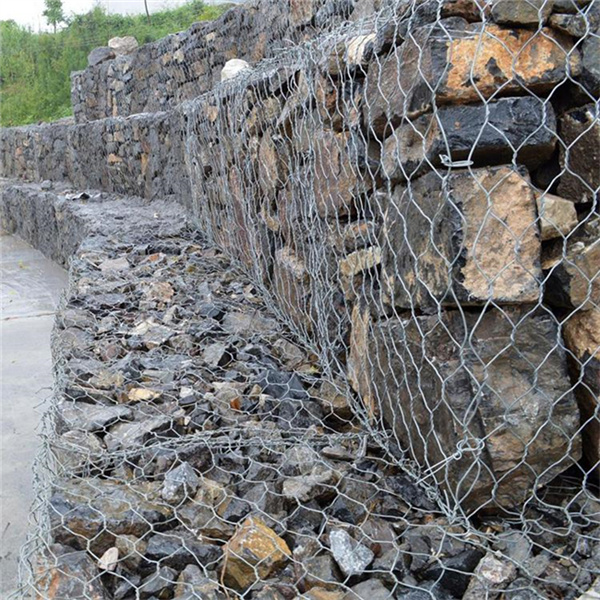నవం . 23, 2024 21:12 Back to list
high quality gabion retaining wall specifications
High-Quality Gabion Retaining Wall Specifications
Gabion retaining walls have gained immense popularity in civil engineering and landscaping due to their versatility, durability, and aesthetic appeal. These walls are constructed from wire mesh filled with stones, which creates a robust structure capable of withstanding various environmental pressures. Understanding the specifications for high-quality gabion retaining walls is essential for ensuring their longevity and functionality. This article outlines the key specifications and considerations for building effective gabion retaining walls.
Material Specifications
1. Wire Mesh The wire mesh used in gabion walls is typically made of galvanized steel or PVC-coated steel to prevent corrosion. The mesh should have a minimum wire diameter that ensures strength and stability. Common specifications include a wire diameter of 2.7 mm (or 12-gauge) for walls and 3.4 mm (or 9-gauge) for heavy-duty applications. The mesh openings should range from 60 mm x 80 mm to 100 mm x 200 mm to allow drainage while preventing the escape of smaller stones.
2. Filling Material The stones used for filling gabions must meet specific criteria. They should be hard, durable, and resistant to weathering, such as granite, limestone, or sandstone. The stone size typically ranges from 75 mm to 150 mm, promoting stability and reducing the risk of movement under pressure. Proper grading of stone is crucial; a well-graded fill ensures better interlocking and compaction, which enhances the wall's integrity.
3. Gabion Baskets The baskets should be designed to be sturdy and correctly assembled. High-quality gabion baskets come in various sizes, commonly ranging from 1m x 1m x 1m to larger dimensions for heavy-duty applications. The corners and edges must be properly welded or tied to prevent deformation when filled.
Design Specifications
1. Load Capacity Gabion retaining walls must be designed to support the lateral earth pressures imposed by the soil behind them. An engineering analysis should determine the wall's load capacity, factoring in surcharge loads, drainage conditions, and potential soil movement.
2. Height and Batter The maximum height of a gabion wall generally ranges from 2 to 3 meters for standard applications. For walls exceeding this height, a batter (slight inclination) is recommended, typically at a 5-10 degree angle, which improves stability and reduces the risk of failure.
high quality gabion retaining wall specifications

3. Drainage Effective drainage is essential to prevent water buildup behind the wall. A properly designed gabion wall includes drainage features, such as weep holes and drainage layers, to facilitate the flow of water. This prevents hydrostatic pressure, which can compromise the wall's integrity.
Construction Considerations
1. Site Preparation Proper site preparation is crucial for the success of a gabion retaining wall. The foundation must be stable and level to support the wall. Excavation should be done to remove any loose material, and a suitable base material, such as compacted gravel, should be laid.
2. Installation Sequence Gabion baskets should be assembled on-site, ensuring they are aligned and properly tied at the joints. The filling material should be placed in layers and compacted to avoid settlement. It is recommended to start with the lower tiers and work upwards, maintaining a consistent filling technique for stability.
3. Aesthetic Considerations While structural integrity is paramount, the visual appeal of gabion walls can enhance landscape aesthetics. Combining different stone sizes or colors can create a unique appearance. Additionally, integrating planting or vegetation around the wall can further improve its integration into the natural environment.
Maintenance and Inspection
Regular maintenance and inspection are necessary to ensure the longevity of gabion retaining walls. Checking for signs of corrosion, vegetation growth, or stone displacement can help identify potential issues early. It is vital to address drainage problems immediately, as water accumulation can lead to structural failures.
Conclusion
High-quality gabion retaining walls are an excellent solution for erosion control and slope stabilization. By adhering to strict specifications regarding materials, design, and construction practices, engineers and landscapers can create durable and aesthetically pleasing structures that stand the test of time. With proper planning and execution, gabion retaining walls can provide both functionality and beauty to diverse landscapes.
-
Transform Your Outdoor Space with Gabion Fences
NewsApr.01,2025
-
The Versatility of Gabion Baskets for Your Projects
NewsApr.01,2025
-
The Importance of a Protective Net Sleeve for Your Valuable Investments
NewsApr.01,2025
-
The Benefits of Gabion Walls for Your Next Project
NewsApr.01,2025
-
Gabion Baskets
NewsApr.01,2025
-
Discover The Benefits of Protective Nets
NewsApr.01,2025
-
The Essential Guide to Gabion Supplies
NewsMar.12,2025






